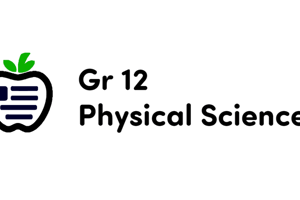Podcast
Questions and Answers
Which of the following is NOT considered a long-range force in physics and chemistry?
Which of the following is NOT considered a long-range force in physics and chemistry?
- Gravitational force (correct)
- Strong nuclear force
- Electromagnetic force
- Weak nuclear force
When do balanced forces occur on an object?
When do balanced forces occur on an object?
- When the object is moving with a constant velocity
- When all the forces acting on the object cancel each other out (correct)
- When the object is accelerating
- When the object is changing direction
What is the consequence of unbalanced forces acting on an object?
What is the consequence of unbalanced forces acting on an object?
- The object experiences acceleration, causing a change in velocity or direction (correct)
- The object remains at rest
- The object moves in a straight line with constant velocity
- The object maintains its velocity without changing direction
Which of the following is an example of balanced forces?
Which of the following is an example of balanced forces?
When an object moves in a straight line with constant velocity, what can be said about the sum of the forces acting on it?
When an object moves in a straight line with constant velocity, what can be said about the sum of the forces acting on it?
What defines mass and weight?
What defines mass and weight?
How is weight calculated according to Sir Isaac Newton's law of universal gravitation?
How is weight calculated according to Sir Isaac Newton's law of universal gravitation?
How does weight change when experiencing a weaker gravitational force?
How does weight change when experiencing a weaker gravitational force?
What happens to an individual's perception of their body weight when the strength of gravity changes?
What happens to an individual's perception of their body weight when the strength of gravity changes?
How does mass differ from weight on other planets?
How does mass differ from weight on other planets?
Flashcards are hidden until you start studying
Study Notes
Introduction
Force diagrams are essential tools in physics and engineering to visualize the applied forces, moments, and their interactions on a body. They consist of a diagram representing the body of interest and the external forces acting on it. By studying different types of forces, balanced forces, and unbalanced forces, we can better understand how these forces affect the movement and behavior of objects in various situations. In this article, we will delve into these concepts by examining types of forces, balanced forces, and unbalanced forces.
Types of Forces
There are several types of forces that can act on an object. These include contact forces and long-range forces:
Contact Forces
Contact forces require direct physical contact between two objects. Examples of contact forces include tension, normal force, and friction. Tension arises when something pulls on an object along the direction of the rope attached to it. The normal force is the reactionary force exerted by one body onto another when they come into contact, pushing perpendicularly against each other's surfaces. Friction, a contact force, opposes motion, resisting sliding between surfaces and acting parallel to the contact surface in the opposite direction of the applied force.
Long Range Forces
Long range forces do not require direct physical contact between the bodies involved. One example is gravity, which acts between any two masses regardless of their distance from each other. Other long-range forces include electromagnetic, weak nuclear, and strong nuclear forces, which play significant roles in various domains of physics and chemistry.
Balanced Forces
Balanced forces occur when all the forces acting on an object cancel out each other, resulting in no net force applied to the object. In such cases, there is neither acceleration nor relative displacement of the object. An example of balanced forces is when two equal but opposite forces are acting on an object; the object remains at rest or maintains its velocity without changing direction. Additionally, when an object moves in a straight line with constant velocity, the sum of the forces acting on it must also be constant.
Unbalanced Forces
Unbalanced forces occur when the forces acting on an object do not counteract each other, leading to a net force. When there is a net force, the affected object experiences acceleration, causing a change in velocity or direction. For instance, if you push a book across a table, your hand applies a force to the book, while the normal force from the table opposes the motion. If the force applied by your hand is greater than the opposing force from the table, the book will move in the direction you pushed it.
Conclusion
Understanding force diagrams and their components is crucial for analyzing various physical situations. By examining types of forces, balanced forces, and unbalanced forces, we can gain valuable insights into the behavior of objects under different conditions. These concepts are not only essential for physics and engineering applications but also serve as a foundation for further studies in these fields.
Studying That Suits You
Use AI to generate personalized quizzes and flashcards to suit your learning preferences.




